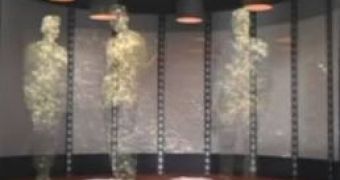Teleportation, the movement of objects or elementary particles from one place to another, more or less instantaneously, without traveling through space, is a very popular fictional concept, appearing in numerous sci-fi productions, "Star Trek" being probably the most famous.
Now, a team of scientists set a new record by sending bits of information over a distance of 89 miles, from the Canary Island of La Palma to the neighboring island of Tenerife, using quantum teleportation. The distance is 10 times greater than the previous attempt at teleportation through free space.
This extraordinary feature was accomplished by using an interesting phenomenon known as "quantum entanglement," in which the quantum states of two or more objects have to be described with reference to each other, even though the individual objects may be spatially separated.
In fact, one aspect of this phenomenon, called quantum teleportation, or entanglement-assisted teleportation, is a technique that transfers a quantum state to an arbitrarily distant location using a distributed entangled state and the transmission of some classical information.
Robert Ursin of the University of Vienna and his team, performed the record-breaking experiment, where tiny packets or particles of light, photons, were used to teleport information between telescopes on the two islands.
"We really wanted to show that this can be done in the real world and our dream is to go into space and try it there. This was a feasibility study funded by the European Space Agency," Dr Ursin said yesterday. "In principle, such experiments may in future be used for teleporting information between places, but our system is not capable of transporting matter," he said.
"We think Star Trek is really very good science fiction but I'm afraid teleporting people is not possible with current technology. But we could use some scheme to teleport information."
Science fiction fans will be disappointed to learn that no one expects to be able to teleport people or other macroscopic objects in the foreseeable future, for a variety of engineering reasons, even though it would not violate any fundamental law to do so.

 14 DAY TRIAL //
14 DAY TRIAL //